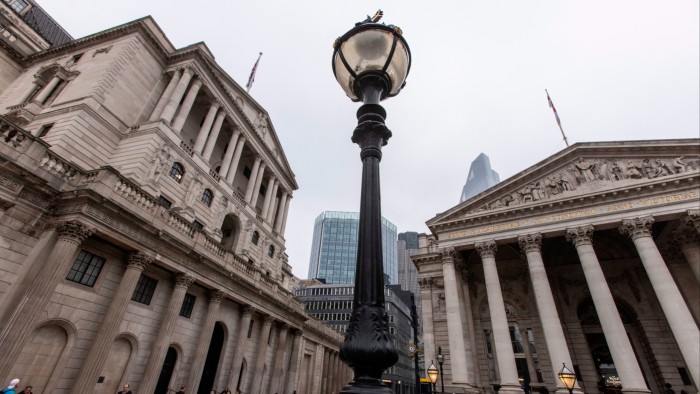Stay informed with free updates
Simply sign up to the UK banks myFT Digest — delivered directly to your inbox.
The Bank of England has diluted the crisis scenario it uses to examine the resilience of British banks, opting for a smaller inflation surge and a milder global economic contraction than in last year’s stress test.
The scenario for this year’s stress test, which the BoE published on Monday, requires Britain’s biggest lenders to model how they would cope with a rebound in UK inflation to a peak of 10 per cent and a 2 per cent decline in global GDP.
The conditions are milder than the “supply shock scenario” used by the central bank in 2024, when it examined the impact of a surge in UK inflation as high as 12 per cent and a 3 per cent drop in global GDP.
The central bank said it had changed its assumptions in the stress scenario, including by delaying the peak of a crisis and reducing its size, to offset the impact of international accounting standard IFRS 9 being implemented fully for the first time.
“All else equal, this updated method has resulted in a reduction in the starting size of some shocks in the stress scenario, although the impact on the aggregate capital drawdown is likely to be small,” it said.
The BoE said the new scenario was “intended to be a coherent ‘tail risk’ scenario designed to be severe and broad enough” for it to “assess the resilience of UK banks to a range of adverse shocks”.
The results of the exercise involving the seven largest UK banks and building societies would be “used to inform the setting of capital buffers” for the sector, it added.
One area where the test is tougher is trade, with lenders having to model how they would handle a 20 per cent drop in world trade owing to “heightened geopolitical tensions”, the BoE said.
This follows a swath of tariffs imposed on US imports by President Donald Trump, and retaliatory measures by the EU and China, prompting fears of a trade war.
The scenario figure is double the drop in global trade that happened after the Covid-19 pandemic and the 2008-09 financial crisis, and tougher than the 17 per cent decline modelled by the BoE’s 2023 stress test.
The central bank recently switched from annual stress tests to doing them every other year. Unlike last year, when the test was a desk-based exercise carried out by officials at the BoE, this year lenders will also carry out and submit their own projections.
The full implementation of the IFRS 9 accounting standard means banks absorb the hit of a crisis more quickly on their capital.
To mitigate the impact of this in the stress test, the BoE said it had delayed the timing and transmission of shocks in the new scenario as well as reducing the scale of the hypothetical shock.
The central bank also assumed lower consumer credit losses “having reviewed past judgments and recent evidence”, and created “space for a greater capital drawdown” by adjusting its assumptions on a special capital buffer that it imposes on lenders to absorb losses in a crisis.
The BoE has been stress-testing banks since 2014 and none has failed since Royal Bank of Scotland was ordered to raise £2bn of extra capital in 2016. The results of the latest exercise will be published in the final three months of this year.



